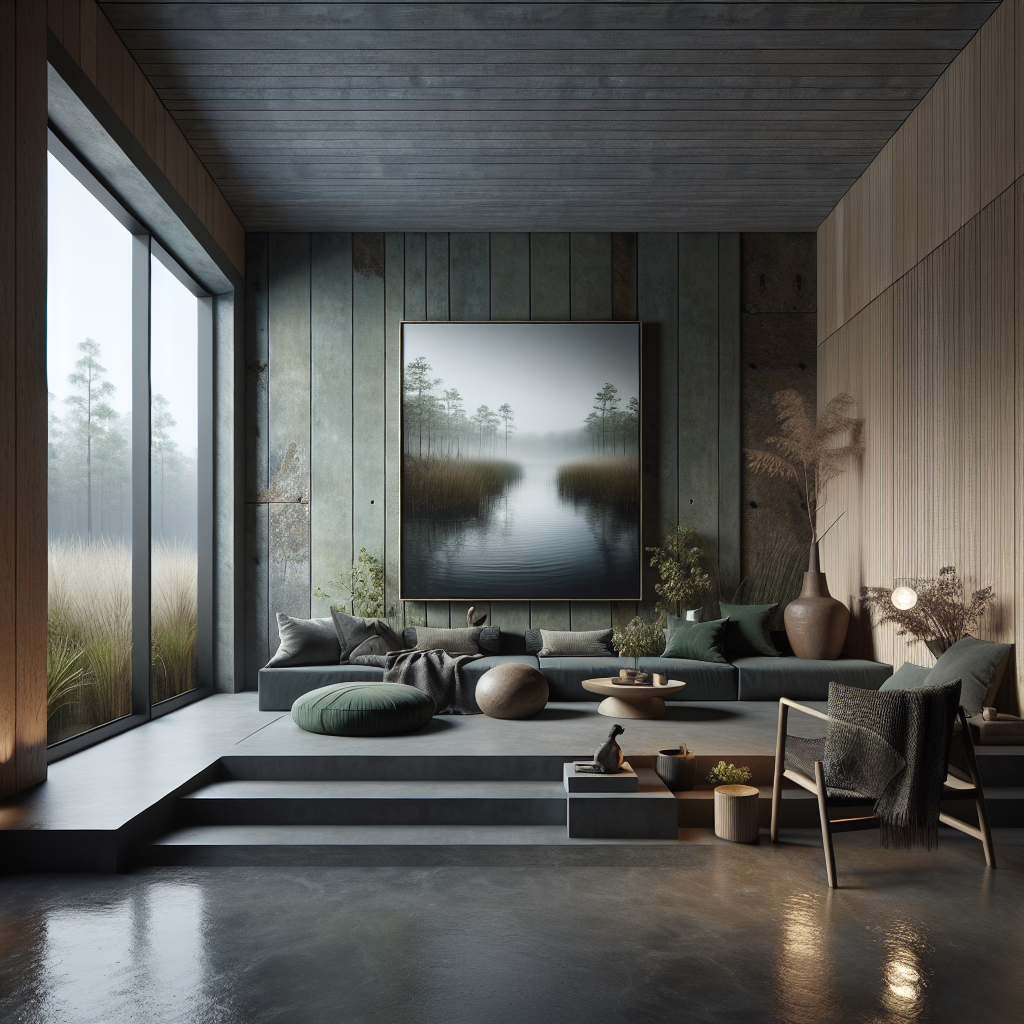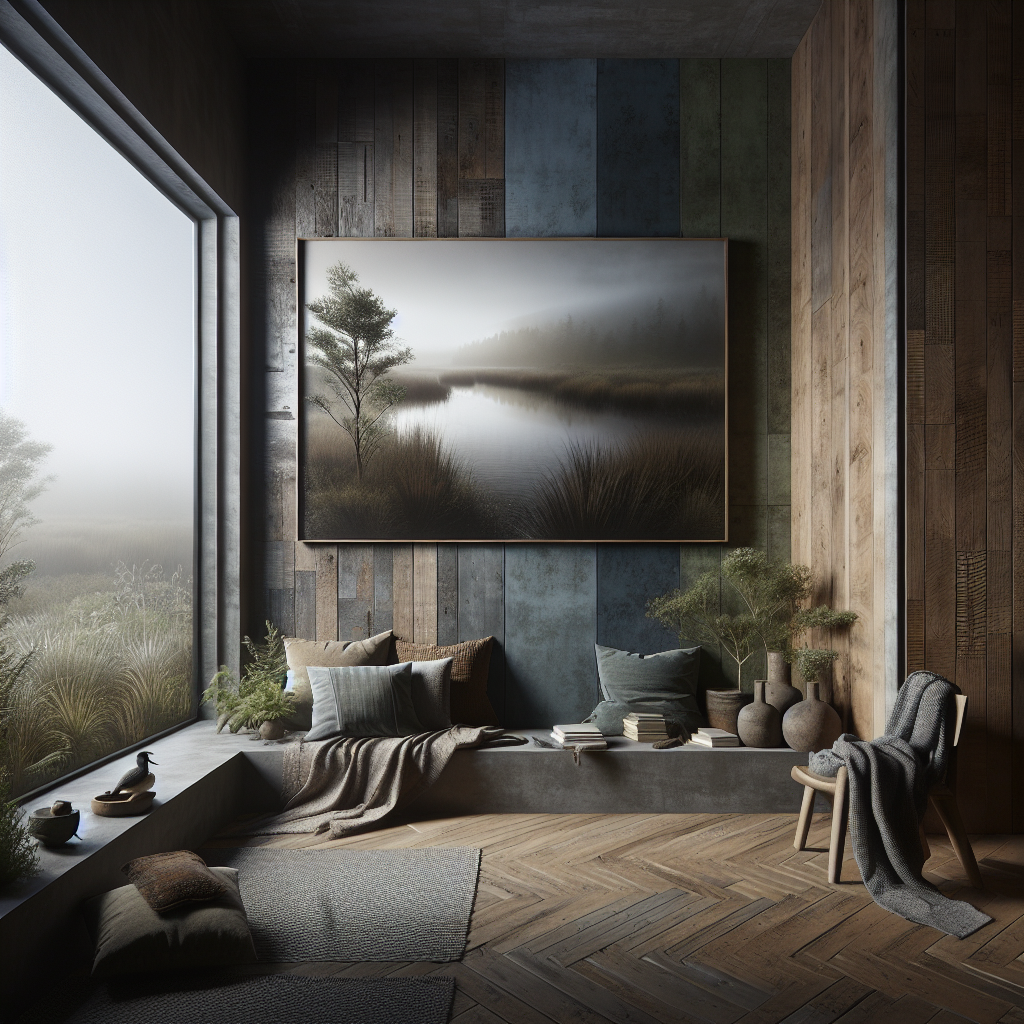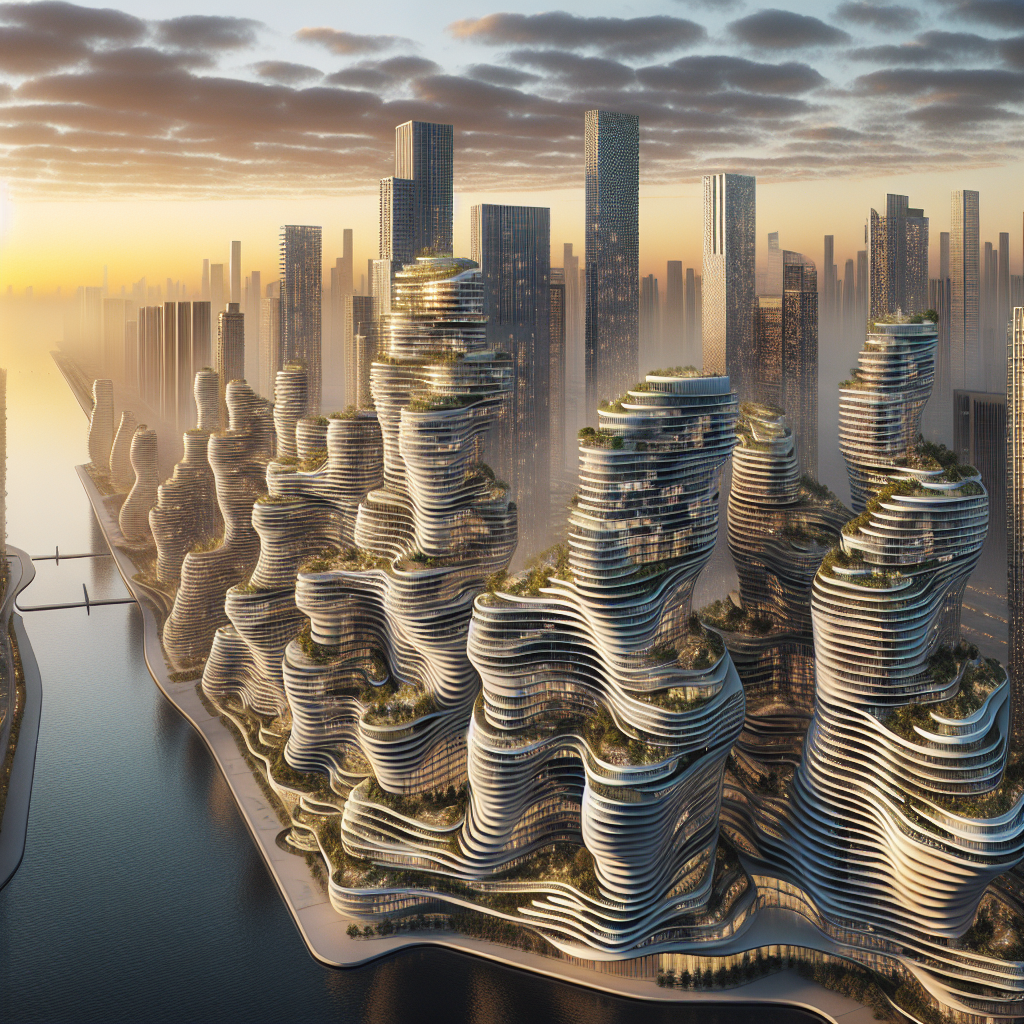Marshland minimalism moody: color palettes referencing local geology

Marshland Minimalism Moody: Color Palettes Referencing Local Geology
In the world of design and architecture, inspiration often emerges from the most unexpected places. The serene, yet mysterious landscapes of marshlands have recently captivated designers and architects alike, giving rise to a distinctive aesthetic: Marshland Minimalism Moody. This emerging trend masterfully combines the understated elegance of minimalism with the rich, atmospheric hues inspired by local geology. The result is a sophisticated, earthy palette that resonates deeply with our collective desire for authenticity, tranquility, and connection to nature.
Unveiling the Essence of Marshland Minimalism
At its core, Marshland Minimalism is about embracing the subtle complexities of wetland environments. These landscapes, often overlooked in favor of more dramatic terrains, possess a unique beauty characterized by muted tones, organic textures, and a pervasive sense of calm. Designers are increasingly turning to these environments, exploring their geological nuances to create interiors and architectural spaces that exude quiet sophistication.
The marshland aesthetic is defined by a palette that includes deep, earthy browns, soft moss greens, slate grays, and moody blues—colors that echo the marsh’s ever-changing light and shadow. This palette is not merely decorative; it reflects a deeper commitment to sustainability and biophilic design, enhancing human well-being by reconnecting us with the natural world. For more insights into biophilic design and its impact on human health, see our exploration of biophilic design principles.
Geological Inspirations: Colors from the Earth
The geology of marshlands is a rich tapestry woven from sedimentary deposits, peat layers, and mineral-rich waters. These elements provide a wealth of inspiration for designers seeking authenticity and depth in their color choices. For instance, the deep umber tones derived from peat deposits evoke warmth and grounding, while mineral-infused waters inspire subtle shades of teal and slate.
One exemplary case is the recent renovation of the Wetland Retreat in the Netherlands, designed by renowned architect Piet Boon. The interiors feature walls clad in textured clay plaster tinted with natural pigments sourced directly from local marsh sediments. This approach not only ensures visual harmony with the surrounding landscape but also embodies a commitment to sustainable, locally-sourced materials.
Materiality and Texture: Enhancing the Moody Palette
Beyond color, Marshland Minimalism emphasizes materiality and texture to create immersive environments. Designers frequently incorporate natural materials such as reclaimed wood, stone, clay, and linen, each chosen for their tactile qualities and visual resonance with marshland geology. The interplay of rough-hewn timber beams, smooth stone surfaces, and soft linen upholstery creates spaces that are both visually compelling and sensorially rich.
A striking example is the Salt Marsh House in Suffolk, UK, designed by Niall McLaughlin Architects. Here, weathered timber façades and interiors clad in reclaimed stone and clay plaster seamlessly blend with the marshland surroundings. The interior palette, dominated by muted greens, grays, and browns, is complemented by carefully curated textures that evoke the organic complexity of the marsh.
Lighting and Atmosphere: Capturing the Marshland Mood
Lighting plays a pivotal role in Marshland Minimalism, capturing the ephemeral qualities of marsh landscapes. Designers often employ diffused, indirect lighting to mimic the soft, shifting illumination found in natural wetlands. Fixtures crafted from translucent materials, such as frosted glass or delicate fabric shades, diffuse light gently, creating interiors that feel serene and contemplative.
The Danish design studio Norm Architects recently demonstrated this approach in their project, the Fjord House. Situated near marshlands in Denmark, the residence features minimalist interiors illuminated by strategically placed fixtures that cast gentle, moody glows reminiscent of twilight reflections on marsh waters. The resulting atmosphere is one of tranquility and introspection, perfectly aligning with the marshland aesthetic.
Sustainability and Marshland Minimalism
The marshland-inspired palette and design ethos align seamlessly with contemporary sustainability goals. By sourcing materials locally and drawing inspiration from regional geology, designers minimize environmental impact and foster deeper connections between inhabitants and their surroundings. This approach echoes broader trends in sustainable architecture, such as the rise of wooden skyscrapers and the increasing adoption of zero-waste design principles.
Moreover, marshlands themselves play a crucial ecological role, acting as natural carbon sinks and supporting biodiversity. By highlighting these landscapes through thoughtful design, architects and designers raise awareness of their ecological importance, contributing to broader conservation efforts. For a deeper understanding of marshland ecosystems, explore the Wetland entry on Wikipedia.
Marshland Minimalism in Commercial and Public Spaces
While initially popularized in residential interiors, Marshland Minimalism is now making its mark in commercial and public spaces. Boutique hotels, restaurants, and wellness centers increasingly adopt this aesthetic, recognizing its ability to create calming, inviting environments that resonate with contemporary sensibilities.
The recently opened Marsh Spa in Vancouver exemplifies this trend. Designed by Studio Roslyn, the spa features interiors inspired by local marshland geology, with walls finished in muted green plaster, floors of reclaimed stone, and furnishings upholstered in natural linen. The carefully curated palette and textures foster a sense of calm and connection, enhancing the spa’s wellness-focused mission.
Future Directions: Marshland Minimalism and Technological Integration
Looking ahead, Marshland Minimalism is poised to intersect with emerging technologies, further enriching its design possibilities. Innovations such as augmented reality and advanced material sciences promise new ways to interpret and express marshland-inspired aesthetics. Imagine interactive AR installations that project dynamic marshland scenes onto interior surfaces, or advanced biomaterials that mimic the textures and colors of marsh geology while offering enhanced sustainability.
These technological integrations will not only expand the creative potential of Marshland Minimalism but also reinforce its relevance in an increasingly digital world. As explored in our analysis of technology’s impact on futuristic city design, thoughtful integration of digital innovations can profoundly enhance architectural experiences.
Embracing the Marshland Minimalism Movement
As Marshland Minimalism continues to gain momentum, its appeal lies in its authenticity, depth, and connection to nature. Designers and architects embracing this aesthetic are not merely following a trend; they are participating in a broader cultural shift toward sustainability, mindfulness, and environmental stewardship.
Whether through residential interiors, commercial spaces, or public installations, Marshland Minimalism offers a compelling vision for the future of design—one that is grounded in local geology, enriched by natural textures, and illuminated by the moody, contemplative hues of marshland landscapes.
To delve deeper into sustainable design practices, consider exploring the principles of biophilic design and the emerging field of environmental design on Wikipedia.
Ultimately, Marshland Minimalism represents more than a design trend; it embodies a thoughtful, holistic approach to living and creating spaces that resonate deeply with our innate connection to the natural world.








